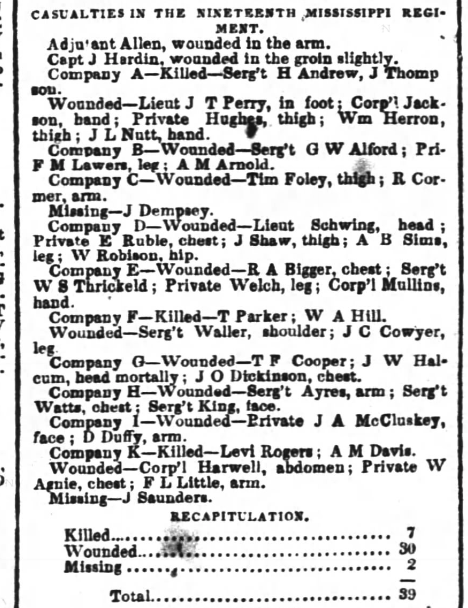From the records of the US War Department’s Office of the Quartermaster General, now online thanks to Ancestry.com and FamilySearch.com, here’s his widow’s application for a government marker for Sharpsburg survivor Leroy Thomas Daughtry, late Sergeant, Company C, 12th Mississippi Infantry. He died relatively young, just about 30 years old, in 1871.
From the New Orleans Daily Picayune of 29 October 1862, online from Newspapers.com, casualties among the troops of the 19th Mississippi Infantry at Sharpsburg on 17 September 1862:
From the New Orleans Daily Picayune of 29 October 1862, online from Newspapers.com, casualties among the troops of the 12th Mississippi Infantry at Sharpsburg on 17 September 1862:
See more about these men starting with the AotW page for the regiment.



